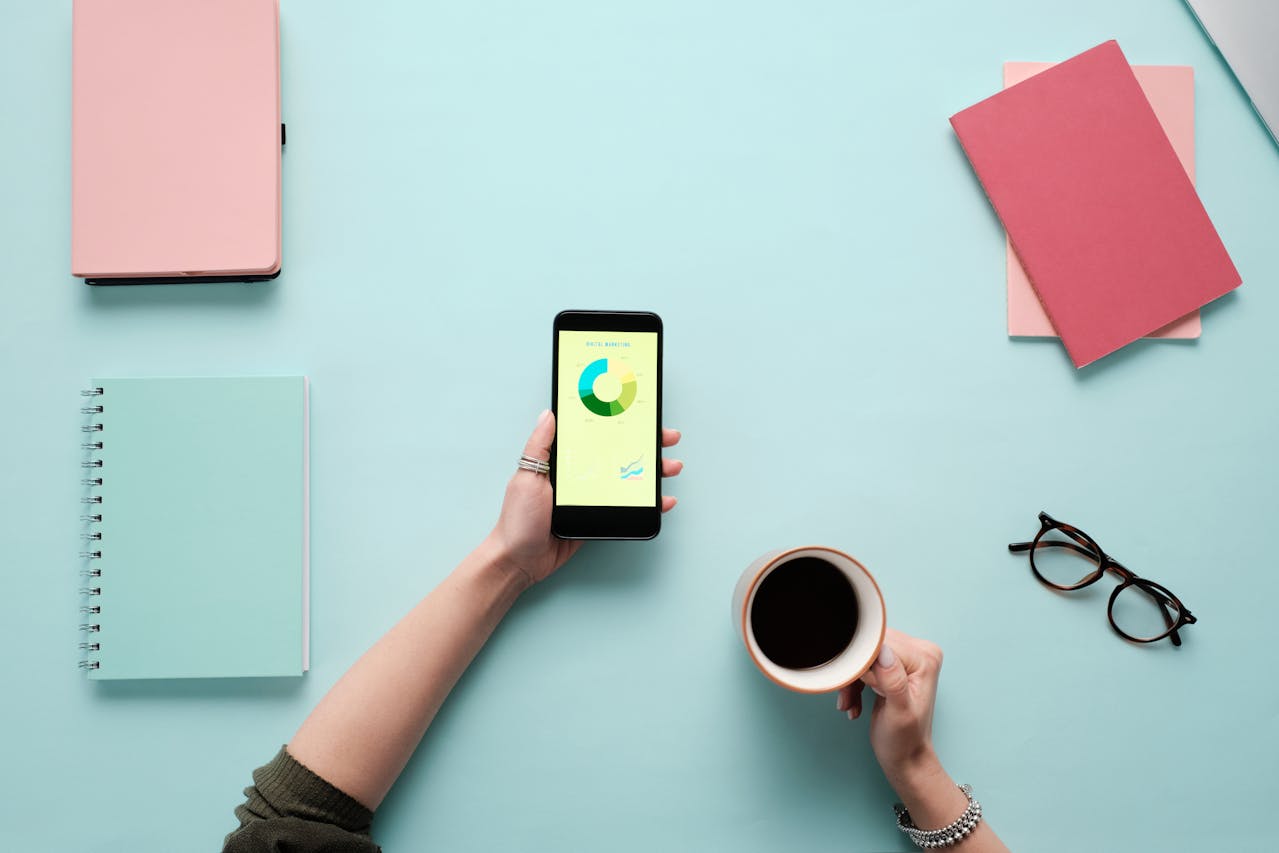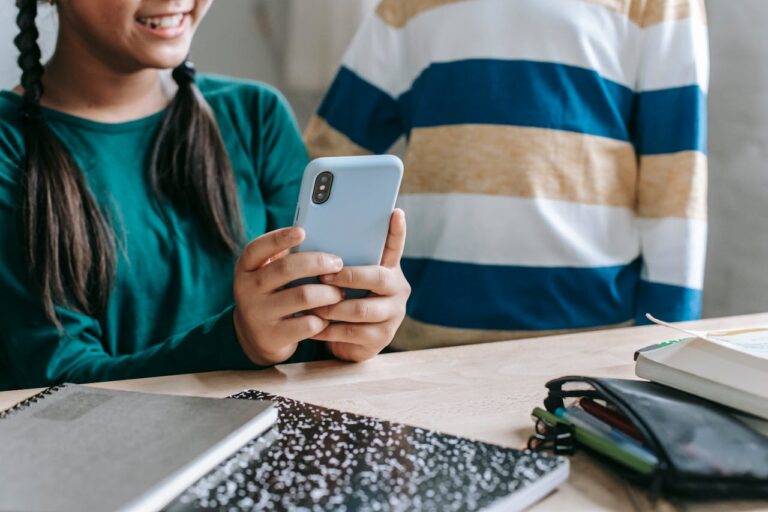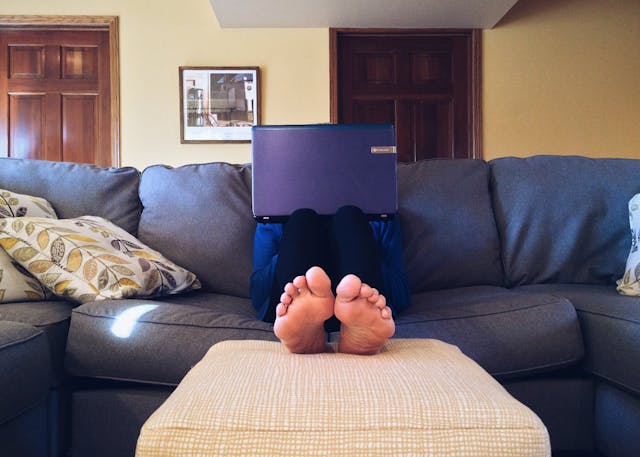Write Us: hello@ali5.org
What Is Digital Minimalism and Is It Worth Trying in Today’s Hyperconnected World?
Learn what digital minimalism really means and discover how simplifying your online life can improve focus, mental health, and overall happiness.

Our phones buzz more than our doorbells do these days. We start looking through texts, notifications, and frequent updates as soon as we get up. It’s easy to believe that life doesn’t happen on screens but rather outside of them. In the middle of all this turmoil, digital minimalism has become a silent revolution.
It’s not about getting rid of your phone or all of your apps; it’s about using technology on purpose instead of letting it use you. But what is digital minimalism, and is it worth trying in a world when everything is connected? Let’s check it out.
What does it mean to be a digital minimalist?
Digital minimalism is about using technology less often and more purposefully. The author, Cal Newport, came up with the word. It means that you should use technology in a way that fits with your personal beliefs instead of letting notifications, distractions, and endless scrolling take over your day.
In short, it means asking:
“Is this gadget, app, or internet habit really making my life better, or is it just taking up space and time?”
Digital minimalism is not against technology; it is for thoughtfulness. In a time when your attention is continuously being pulled in many directions, this is a way to get your focus, creativity, and peace of mind back.
Why digital simplicity is more important than ever
Technology has changed every facet of our lives, so “being online” is now the norm. Technology gives us access to people and opportunities, but it also keeps us stuck in a never-ending cycle of comparison, mental fatigue, and distraction.
Digital simplicity is now a must because of the following reasons:
1. A lot of information
We take in more information every day than our brains can handle from tweets, TikToks, movies, emails, and the news. It’s hard to concentrate, think deeply, or even get enough sleep when you’re being attacked all the time.
2. The Economy of Attention
Every like, notice, and sound on social media sites gives us a rush of dopamine that keeps us coming back for more. We lose focus and start looking around without realizing how long it’s been.
3. More Stress and Anxiety
Research indicates that regular internet usage, particularly on social media platforms, correlates with elevated levels of anxiety, fear of missing out (FOMO), and sadness. We feel more alienated from ourselves the more “connected” we are.
4. Not there
Have you ever looked at your phone while you were eating, talking, or even just walking? That brief moment of distraction makes you lose touch with the actual world. This habit makes it more and harder for us to live in the present and enjoy the moment.
The Basics of Digital Minimalism
These are the major ideas behind digital minimalism. If you want to know more:
1. Use on purpose
Every piece of software or digital tool should have a clear use. If it doesn’t help, throw it away or use it less often.
2. Putting more value on quality than quantity
Instead of trying to keep up with ten social media sites, pick one or two that really help your life or job.
3. Looking inside and being alone
Digital minimalists plan time away from screens to think, be creative, and relax.
4. Careful eating
Instead of automatically ingesting digital things, do it on purpose. Don’t just skim through your feed; read long articles, watch videos that make you think, and don’t just scroll.
5. Getting back in touch with the real world
You will have more energy for real-life interactions with people, hobbies, nature, and personal growth the less time you spend in front of screens.
How to Begin Practicing Digital Minimalism
You don’t have to stop using social media or spend all your time alone to become a digital minimalist. It means making subtle, long-lasting changes to how you use technology so that it fits better with your values.
Here’s a useful plan to get started:
1. Look at your online life
Make a list of all the apps, websites, and digital tools you use regularly. Then think about this:
- Does this do anything useful?
- Does it make my life better, or does it just make it busier?
If someone is wasting your time or effort, you should mut or get rid of them.
2. Turn off unnecessary alerts
Every vibration or ping pulls your attention away. If you turn off alerts that aren’t essential, you’ll feel more comfortable and in charge right away.
3. Make rules about how much time you can spend on screens
You can use the phone’s built-in capabilities or apps like Freedom or Digital Wellbeing to keep track of and limit how much time you spend on your phone.
For instance:
- When you’re eating, don’t use your phone.
- No social media after 9:00 p.m.
- Scrolling over social media for an hour every day
- Limits of any size have a tremendous impact.
4. Set up “No-Phone” Areas
Don’t use screens in specific portions of your day, such as your bedroom, dining room, or morning ritual. These planned breaks help your mind feel fresh again.
5. Use things in the real world instead of online
Get an actual book instead of reading on your phone. Instead of talking to someone online, ask them to coffee. Instead of watching another reel, go outside for a brief walk.
6. Do a digital cleanse
Once a month, try a digital detox that lasts 24 hours or a whole weekend. Stop everything and stay away from social media and other screens that aren’t necessary. When you don’t use it, it resets your thoughts and reminds you how pleasant life may be.
The Good Things About Digital Minimalism
You will notice big changes in your energy, focus, and mood as soon as you start cleaning up your digital mess. Here are some of the main benefits:
1. Better focus and productivity
Your brain will be able to focus when you stop checking your phone all the time. The chores get done faster and better.
2. Better Mental Health
Cutting less on screen time can typically help with anxiety and mental stability. You stop comparing your personal path to the best parts of other people’s journeys online.
3. stronger Ties
Conversations become more meaningful and profound when you pay complete attention to the other person. Real relationships are usually superior to virtual ones.
4. More time to live life
Digital minimalism can give you back hours of your day to read, do hobbies, relax, or spend time with people you care about.
5. A feeling of peace inside
When there isn’t a lot of noise or notifications, your mind feels less heavy. You begin to feel more in control and present instead of always reacting or running.
Is it a good idea to be a digital minimalist?
If you want to do it that way, that is. Digital minimalism is more about getting things to work together than being beautiful. The question is:
“Is technology making my life better or is it slowly taking it away?”
This method can change your life and how you think, no matter how stressed, overwhelmed, or trapped you feel. But keep in mind that you don’t have to take everything out. You can still text your friends, surf YouTube, or use social media merely for pleasure. Digital devices should be used as tools instead of distractions.
In short, digital minimalism is useful because it helps you get back the time, focus, and mental clarity that technology takes away from you without you knowing it.
Last thoughts
We can’t escape the digital environment that is always around us. But we may choose how we deal with it.
Digital minimalism doesn’t want you to stop using technology; it wants you to utilize it differently. You recall what is really important when you stop letting screens take over your time: peace, creativity, attentiveness, and your relationships with other people.
So, the next time you reach for your phone without thinking, pause and think. Breathe. Think about whether this is actually what you want to do right now. You can be surprised by several things that happen in the real world.







